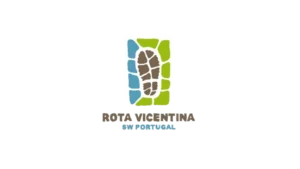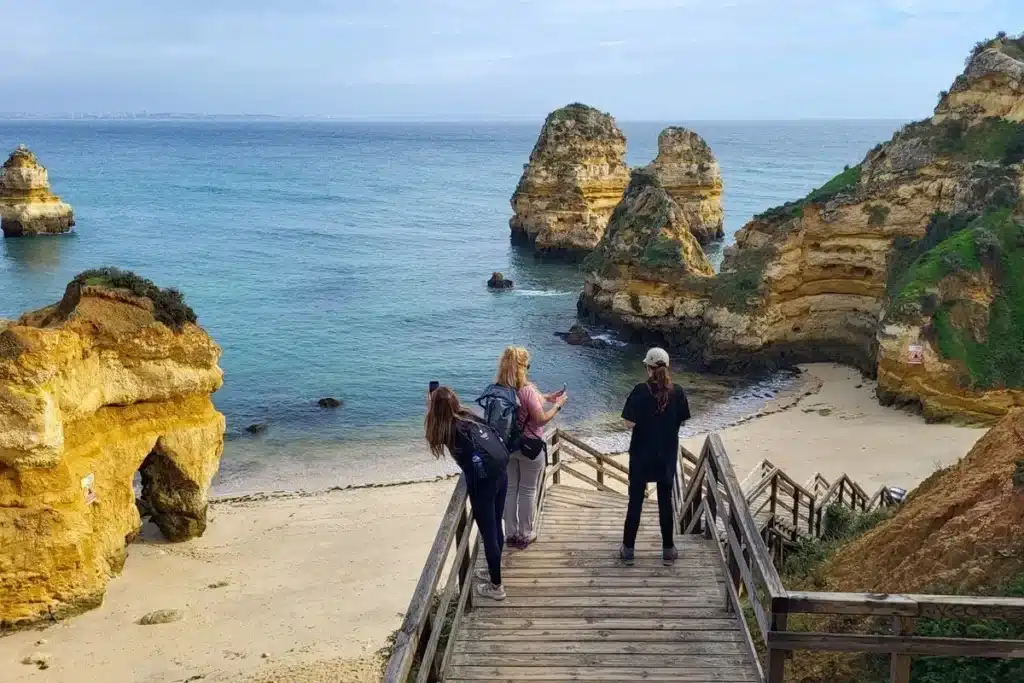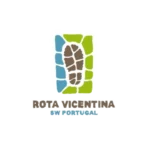
Rota Vicentina
PORTUGAL


highlights of the trip
Trilho dos Pescadores: a trail through the legendary Rota Vincentina
Crossing secluded beaches and beautiful cliffs alongside the deep blue Atlantic
With unique accommodation in charming locations
Rota Vicentina







TENERIFE
Get a Quote

Tell us your preferences. We will respond as soon as possible.


Alentejo – Natural paradise in south-western Portugal
In southwestern Portugal, the regions of Alentejo and Algarve—especially the Costa Vicentina—have traditionally been sparsely populated areas where agriculture, fishing, and livestock farming predominated. For a long time, this coastal strip remained isolated, allowing its biodiversity and natural landscape to remain almost untouched.
In the past, a network of rural trails and coastal paths connected small towns, beaches and cliffs. Used by locals to access the sea, move livestock and trade products between villages, many of these paths have ancient origins and formed the basis of what would later become the Rota Vicentina.
The environmental and tourist value of this region began to stand out at the beginning of the 21st century. Back in 1995, with the creation of the Southwest Alentejo and Vicentine Coast Natural Park, regulations were introduced to curb uncontrolled urbanisation and promote more environmentally friendly tourism.
It was in the 2000s that the idea took shape to map out an official hiking trail that would take advantage of this network of traditional paths, with the aim of combining the promotion of nature tourism with local economic development and sustainability.
The initiative was promoted by the non-profit association Rota Vicentina Associação, established in 2010, which brought together various entities: municipal governments, ecotourism companies, environmental organisations and local communities.
The Rota Vicentina was officially inaugurated in 2012, with two main routes:
▸ Trilho dos Pescadores (Fishermen’s Trail): runs along the coastline, following old paths used by fishermen.
▸ Caminho Histórico (Historic Trail): crosses the interior, linking historic villages and agricultural paths.
Together, the two routes cover more than 350 kilometres of well-marked trails that run through the Alentejo and Algarve, from Santiago do Cacém to Cape St. Vincent in Sagres.
Fishermen’s Trail ▸ Rota Vicentina
At the southwestern tip of the European continent, where Portugal overlooks the Atlantic Ocean from its rugged cliffs, lies a network of trails that once served as a passageway for fishermen, shepherds and farmers. For generations, these paths—discreet, traced over time by those who lived off the land and the sea—linked scattered villages, hidden orchards and small coves isolated from the modern world. Functional, modest paths, but deeply rooted in the daily life of a region that lived to the rhythm of the wind, the tides and rural work.
In 1995, with the creation of the Southwest Alentejo and Vicentine Coast Natural Park, the ecological value of the area was officially recognised. However, isolation continued to mark life in these lands, and many local communities suffered from the progressive abandonment of the younger generations. In this context, an innovative proposal emerged: to transform these ancient trails into a resource to revitalise the region through hiking and nature tourism.
A diverse group of local actors — from farmers and rural entrepreneurs to cultural associations and environmentalists — joined forces to bring to life a project that combined conservation, development and community. Thus, the Rota Vicentina was born: not as a conventional tourist infrastructure, but as a way to reconnect the territory with its roots and visitors with an authentic experience.
The route was officially inaugurated in 2012, after years of joint work. Two main routes were designed. The Trilho dos Pescadores, or Fishermen’s Trail, skirts the coast along paths historically used by those who fished at sea. The Caminho Histórico, meanwhile, heads inland, following old rural routes that connect villages, farmland and vestiges of other eras.
What began as a local initiative became an international phenomenon. Hikers from all over the world began to explore these unspoilt landscapes, attracted by the natural beauty, the hospitality of the communities and the sense of authenticity offered by the trail. As the route gained popularity, new initiatives emerged: small accommodation providers, restaurants promoting local cuisine, craft workshops and projects linked to responsible tourism.
Today, the Rota Vicentina represents much more than a network of marked trails. It is a symbol of how respect for natural and cultural heritage can become a driving force for the future. More than a hiking experience, it is an invitation to slow down, listen to what the land and its people have to say, and participate in the regeneration of a territory that has decided to open itself to the world without losing its essence.
Rota Vicentina: Natural Treasure of the Portuguese Southwest Coast
The Rota Vicentina is a long-distance trail that winds along the south-western coast of the country, offering walkers a unique experience that combines unspoilt nature, rural culture and coastal landscapes of unparalleled beauty.
The Route: The Rota Vicentina consists mainly of two distinct but complementary routes:
Camino Histórico: A 230-kilometre trail that runs through the interior, connecting old paths used by locals to travel between villages. It passes through rolling hills, cork oak forests, small hamlets and fertile valleys.
Trilho dos Pescadores: A coastal route that follows the paths traditionally used by local fishermen to access their fishing spots. It offers panoramic views of the Atlantic Ocean, rugged cliffs and unspoilt beaches.
Exceptional biodiversity: The region crossed by the Rota Vicentina is part of the Southwest Alentejo and Vicentine Coast Natural Park, one of the best-preserved coastal areas in Europe. This protected area is home to:
▸More than 750 species of plants, many of them endemic
▸Numerous species of migratory and resident birds
▸A rich marine fauna visible from the cliffs
▸Unique ecosystems where Mediterranean and Atlantic influences coexist
Rota Vicentina: Natural Treasure of the Portuguese Southwest Coast
The Rota Vicentina is a long-distance trail that winds along the south-western coast of the country, offering walkers a unique experience that combines unspoilt nature, rural culture and coastal landscapes of unparalleled beauty.
The Route: The Rota Vicentina consists mainly of two distinct but complementary routes:
Camino Histórico: A 230-kilometre trail that runs through the interior, connecting old paths used by locals to travel between villages. It passes through rolling hills, cork oak forests, small hamlets and fertile valleys.
Trilho dos Pescadores: A coastal route that follows the paths traditionally used by local fishermen to access their fishing spots. It offers panoramic views of the Atlantic Ocean, rugged cliffs and unspoilt beaches.
Biodiversidad excepcional: The region crossed by the Rota Vicentina is part of the Southwest Alentejo and Vicentine Coast Natural Park, one of the best-preserved coastal areas in Europe. This protected area is home to:
▸More than 750 species of plants, many of them endemic
▸Numerous species of migratory and resident birds
▸A rich marine fauna visible from the cliffs
▸Unique ecosystems where Mediterranean and Atlantic influences coexist
The Rota Vicentina has established itself as a top tourist destination for lovers of active, sustainable and nature tourism. Its carefully planned tourist development allows visitors to enjoy this Portuguese natural gem without compromising its conservation.
Travelling along the Rota Vicentina is not only a natural adventure, but also a cultural one. Along the way, hikers can discover traditional villages where time seems to have stood still, taste authentic Alentejo and Algarve cuisine, learn about ancestral crafts and agricultural practices, and interact with the local inhabitants, who are known for their hospitality.
The Rota Vicentina is an exemplary model of tourism development that benefits local communities while preserving the region’s natural and cultural heritage, offering visitors an authentic and enriching experience far from mass tourism.
The Rota Vicentina has established itself as a top tourist destination for lovers of active, sustainable and nature tourism. Its carefully planned tourist development allows visitors to enjoy this Portuguese natural gem without compromising its conservation.
Travelling along the Rota Vicentina is not only a natural adventure, but also a cultural one. Along the way, hikers can discover traditional villages where time seems to have stood still, taste authentic Alentejo and Algarve cuisine, learn about ancestral crafts and agricultural practices, and interact with the local inhabitants, who are known for their hospitality.
The Rota Vicentina is an exemplary model of tourism development that benefits local communities while preserving the region’s natural and cultural heritage, offering visitors an authentic and enriching experience far from mass tourism.
ANCESTRAL ORIGINS OF THE ROTA VICENTINA
Although the Rota Vicentina is a recently formalised tourism project, it is based on historic trails with centuries of tradition and use by local communities. Its evolution into one of the most prestigious trails in Europe reflects the history of the territory it crosses.
There is archaeological evidence that some sections of these trails were used by the first human communities that inhabited the region more than 5,000 years ago.
The Romans established trade routes along the south-west coast, connecting settlements and facilitating the transport of resources. Later, the Arab occupation of the Iberian Peninsula left settlements along the south-west coast of Portugal, the remains of which can still be found today along the Rota Vicentina.
Medieval period:
During the Christian Reconquista, these roads served as routes for advance and communication between coastal fortresses and inland towns, leading to the development of a network of trails used by peasants, merchants and pilgrims. Many sections served as transhumance routes for livestock and as routes for the trade of local products such as cork and agricultural products.
ANCESTRAL ORIGINS OF THE ROTA VICENTINA
Although the Rota Vicentina is a recently formalised tourism project, it is based on historic trails with centuries of tradition and use by local communities. Its evolution into one of the most prestigious trails in Europe reflects the history of the territory it crosses.
There is archaeological evidence that some sections of these trails were used by the first human communities that inhabited the region more than 5,000 years ago.
The Romans established trade routes along the south-west coast, connecting settlements and facilitating the transport of resources. Later, the Arab occupation of the Iberian Peninsula left settlements along the south-west coast of Portugal, the remains of which can still be found today along the Rota Vicentina.
Medieval period:
During the Christian Reconquista, these roads served as routes for advance and communication between coastal fortresses and inland towns, leading to the development of a network of trails used by peasants, merchants and pilgrims. Many sections served as transhumance routes for livestock and as routes for the trade of local products such as cork and agricultural products.
Revival of the Rota Vicentina as a modern project
The Rota Vicentina as a structured tourism project has a more recent history:
▸2009-2011: The initial idea of creating a long-distance trail that would showcase the region’s natural and cultural heritage emerges. A group of local businesspeople and hiking enthusiasts begin planning the project.
▸2012: The Rota Vicentina Association is officially founded, a non-profit organisation that brings together businesspeople, municipalities and local organisations with the aim of developing and managing the trail.
▸2013: The Rota Vicentina is officially inaugurated with the marking of the Historical Trail and the Fishermen’s Trail, adding approximately 350 kilometres of marked trails.
Consolidation and recognition
Over the last decade, the Rota Vicentina has undergone significant development:
▸2014-2016: Comprehensive signage for the routes is completed and a certification system for accommodation and associated services is developed.
▸2016: The route receives the ‘Leading Quality Trails – Best of Europe’ award, a certification granted by the European Ramblers Association, positioning it among the best trails on the continent.
▸2018-2019: The network is expanded with new circular routes and connections, reaching more than 450 kilometres of signposted trails.
▸2020 onwards: Despite the challenges of the pandemic, the Rota Vicentina is consolidating its position as a model of sustainable tourism development, focused on land conservation and the well-being of local communities.
Associated cultural heritage:
The history of the Rota Vicentina is closely linked to local traditions and legends:
▸Worship of Saint Vincent: The coast is named after Saint Vincent, whose body, according to tradition, washed up on these shores after his martyrdom. This legend gave rise to historic pilgrimages to Cape Saint Vincent.
▸Maritime heritage: The route preserves the memory of fishing communities and their ancestral fishing techniques from cliffs, some of which are still practised today.
▸Rural traditions: The Historic Way bears witness to centuries-old agricultural and livestock practices, some of which have survived to the present day, such as the production of cork, honey and artisan cheeses.
The Rota Vicentina is therefore not only a successful tourism project, but also an exercise in the recovery and preservation of the historical, cultural and natural heritage of one of the most authentic regions of Portugal.
Rota Vicentina
Revival of the Rota Vicentina as a modern project
The Rota Vicentina as a structured tourism project has a more recent history:
▸2009-2011: The initial idea of creating a long-distance trail that would showcase the region’s natural and cultural heritage emerges. A group of local businesspeople and hiking enthusiasts begin planning the project.
▸2012: The Rota Vicentina Association is officially founded, a non-profit organisation that brings together businesspeople, municipalities and local organisations with the aim of developing and managing the trail.
▸2013: The Rota Vicentina is officially inaugurated with the marking of the Historical Trail and the Fishermen’s Trail, adding approximately 350 kilometres of marked trails.
Consolidation and recognition
Over the last decade, the Rota Vicentina has undergone significant development:
▸2014-2016: Comprehensive signage for the routes is completed and a certification system for accommodation and associated services is developed.
▸2016: The route receives the ‘Leading Quality Trails – Best of Europe’ award, a certification granted by the European Ramblers Association, positioning it among the best trails on the continent.
▸2018-2019: The network is expanded with new circular routes and connections, reaching more than 450 kilometres of signposted trails.
▸2020 onwards: Despite the challenges of the pandemic, the Rota Vicentina is consolidating its position as a model of sustainable tourism development, focused on land conservation and the well-being of local communities.
Associated cultural heritage:
The history of the Rota Vicentina is closely linked to local traditions and legends:
▸Worship of Saint Vincent: The coast is named after Saint Vincent, whose body, according to tradition, washed up on these shores after his martyrdom. This legend gave rise to historic pilgrimages to Cape Saint Vincent.
▸Maritime heritage: The route preserves the memory of fishing communities and their ancestral fishing techniques from cliffs, some of which are still practised today.
▸Rural traditions: The Historic Way bears witness to centuries-old agricultural and livestock practices, some of which have survived to the present day, such as the production of cork, honey and artisan cheeses.
The Rota Vicentina is therefore not only a successful tourism project, but also an exercise in the recovery and preservation of the historical, cultural and natural heritage of one of the most authentic regions of Portugal.
Rota Vicentina
Rota Vicentina & Fisherman’s Trail Portugal
What is the Fisherman’s Trail?
The Fisherman’s Trail (Rota Vicentina) is a spectacular 226,5 km coastal walking route along Portugal’s southwest Atlantic coast, stretching from Porto Covo to Odeceixe. It follows ancient paths used by local fishermen and offers dramatic clifftop views, secluded beaches, and authentic Portuguese coastal villages.
How long does it take to complete?
The standard itinerary takes 4-5 days, but we offer flexible options:
- Express 3-day version focusing on highlights
- Extended 7-day journey with rest days and cultural activities
- Customizable daily distances based on your fitness level and preferences
What makes this a self-guided experience?
You’ll receive comprehensive support materials including detailed maps, GPS coordinates, downloadable GPX files, and a mobile app with offline functionality. While you walk independently, you have 24/7 support and pre-arranged accommodations with luggage transfers between stops.
When is the best time to walk the trail?
The optimal seasons are:
-
- Spring (March-May): Wildflowers, mild temperatures, fewer crowds
- Fall (September-November): Warm sea temperatures, stable weather
- Winter (December-February): Mild but can be windy and rainy
- Summer (June-August): Warmest but busiest and hottest
How far in advance should I book?
We recommend booking 2-3 months ahead, especially for peak seasons (Easter, summer, and fall). Last-minute bookings may be available but with limited accommodation choices.
What’s included in the package?
▸Detailed maps and GPS navigation materials
▸Mobile app with offline functionality
▸Pre-arranged accommodation (breakfast included)
▸Daily luggage transfer service
▸24/7 emergency support hotline
▸Cultural activity recommendations and local partnership discounts
Trail Difficulty & Fitness
How difficult is the Fisherman’s Trail?
The trail is rated as moderate difficulty. Daily distances range from 12-18km with some elevation changes along clifftops. You should be comfortable walking 4-6 hours daily on varied terrain including sandy paths, rocky sections, and wooden boardwalks.
Do I need special equipment?
Essential items include:
▸Sturdy walking boots with good ankle support
▸Weather-appropriate clothing (layers recommended)
▸Sun protection (hat, sunscreen, sunglasses)
▸Refillable water bottle
▸Small daypack for personal items
We provide a detailed packing list upon booking and offer equipment rental for specialized items.
What if I can’t complete a section?
We provide alternative transport options and shorter route variations. Our support team can arrange pickup services if needed, and accommodations can be adjusted accordingly.
Accommodation & Logistics
Where will I stay?
We partner with locally-owned guesthouses, traditional quintas (country estates), and family-run pousadas. All accommodations are selected for their authentic character, sustainable practices, and warm hospitality. Room types range from standard doubles to family suites.
How does luggage transfer work?
Your main luggage is collected each morning and delivered to your next accommodation by early afternoon. You only need to carry a daypack with essentials for walking. The service includes one bag up to 20kg per person.
What about meals?
Breakfast is included at all accommodations. We provide recommendations for lunch stops and dinner restaurants, prioritizing local establishments. Many accommodations can prepare packed lunches upon request.
Are there ATMs and shops along the route?
Major villages (Vila Nova de Milfontes, Almograve) have ATMs, pharmacies, and small supermarkets. However, we recommend carrying some cash and basic supplies as smaller villages have limited services.
Sustainability & Local Impact
How does this support local communities?
We prioritize partnerships with family-run businesses, local restaurants, and community-based tourism initiatives. A portion of your booking fee goes directly to coastal conservation projects and community development programs.
What sustainable practices should I follow?
We provide Leave No Trace guidelines specific to coastal environments, including:
▸Staying on marked paths to protect dune vegetation
▸Properly disposing of waste (carry out what you carry in)
▸Respecting wildlife and marine ecosystems
▸Using refillable water bottles (refill stations marked on maps)
▸Supporting local businesses and artisans
Can I offset my carbon footprint?
Yes, we offer carbon offset options for flights and ground transportation. We also provide information about using public transport to reach the trail start and finish points.
Cultural Experiences
What cultural activities are available?
Optional experiences include:
▸Dawn fishing trips with local fishermen
▸Traditional cooking classes featuring regional specialties
▸Wine tasting sessions with Alentejo wines
▸Artisan workshops (pottery, basket weaving)
▸Historical site visits with local guides
▸Folk music evenings in village squares
Do I need to speak Portuguese?
While Portuguese language skills are helpful, they’re not essential. Most accommodation owners speak basic English, and we provide a useful phrases guide. Our local partners are experienced with international visitors.
Safety & Support
What support is available during the walk?
▸24/7 emergency contact hotline
▸Local representative check-ins at key points
▸Weather updates and route modification advice
▸Medical facility locations and contact information
▸Equipment replacement options in larger villages
Is travel insurance required?
While not mandatory, we strongly recommend comprehensive travel insurance covering walking activities, medical expenses, and trip cancellation. We can recommend specialized providers upon request.
What about weather contingencies?
We provide indoor activity suggestions and alternative short walks for poor weather days. Accommodations can be extended, and itineraries adjusted as needed. Dangerous weather conditions may require route modifications for safety.
Practical Details
How do I get to the starting point?
Porto Covo is accessible by bus from Lisbon (2 hours) or by rental car. We provide detailed transport information and can arrange private transfers for an additional fee.
What happens at the end of the trail?
The trail ends in Salema or Lagos, with bus connections back to major cities or onward to the Algarve. We can arrange additional nights or transport to your next destination.
Can I extend my stay?
Absolutely! We offer extensions including:
▸Additional nights at the coast
▸Lisbon city breaks
▸Alentejo wine region tours
▸Algarve beach holidays
What if I need to cancel?
Cancellation policies vary by season and timing. Generally, cancellations more than 30 days before departure receive full refunds minus processing fees. Travel insurance is recommended to cover unforeseen circumstances.
Booking & Contact
How do I make a reservation?
Contact us through our website, email, or phone. We’ll discuss your preferences, fitness level, and preferred dates before finalizing your itinerary and sending booking confirmation.
Can I travel solo?
Solo travelers are very welcome! Many of our guests walk independently, and the self-guided format is perfect for solo exploration. We can arrange single accommodation supplements.
What about group bookings?
We accommodate groups of 2-12 people with special rates for larger parties. Corporate and club group bookings receive customized itineraries and team-building activities.
For additional questions not covered here, please contact our specialist team who have extensive knowledge of the Fisherman’s Trail and Portuguese coastal regions.



